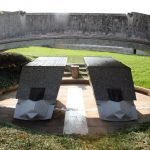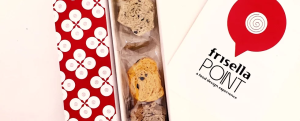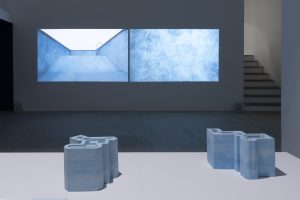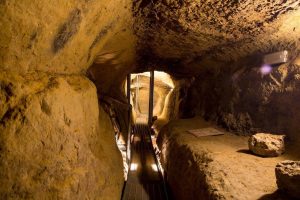
Art by RABARAMA
Rabarama, aka Paola Epifani, creates sculptures and paintings with men, women or hybrid creatures, also passing through the eccentric. The skin of the subjects created by the artist is always decorated with symbols, letters, hieroglyphs and other figures in a variety of shapes. This “cloak” that seems to envelop the figures constantly changes, catching the eye with an extraordinary variety of colors, materials, signs, symbols and metaphors. Hieroglyphs, puzzles and honeycombs are the visualization of the genome, the infinite possible combinations and varieties inherent in humanity and the complexity of the ego. Born in 1969 in Rome, the artist lives and works in Padua from where she answered our questions.
RABARAMA, expressiveness or fantasy: can you explain your pseudonym?Rabarama arises from a private motive that I usually do not disclose. However, over the years, I have come to know that Raba in Sanskrit means “sign”, while Rama is connected to the deity (just think of the Egyptian culture). I found it a fortuitous coincidence (or destiny?) That my pseudonym summed up my art: a sort of “divine” sign, in close relationship with the universal energy of which we are all part.The contemporary art system is governed by an unstable balance and unwritten rules, can you illustrate your artistic and exhibition process?Since I was a child I was attracted to the world of art, thanks also to my parents (my father was a painter and sculptor, my mother a ceramist) who brought me closer to this reality right from the start. Growing up, I understood within myself that sculpture had to be my personal language and form of expression, so I embarked on a course of study that would give me the foundations to then be able to develop this vocation. I studied at the Art School in Treviso and then at the Academy of Fine Arts in Venice; later I started participating in both Italian and international sculpture competitions. When I then started a stable collaboration with an Italian gallery it was possible not only to participate in important events, but also to organize high-level personal exhibitions.What are the materials you prefer in your sculptural works?The material that I work most of all and to which I feel most attached is semi-refractory pink clay, with which I create the prototypes of the sculptures that will then be reproduced in bronze. Sometimes, if the type of work requires it for reasons related to size or balance, I also use plasticine. These are the materials that I personally use and on which I model my creatures, which are then brought to the foundry to be replicated in bronze, through an artisanal process. Over the years I have also created works in marble, hard and semiprecious stones, silicone rubber, glass and precious metals.Your creations are inserted in an unconscious and conflicting dimension of the individual, determined by instinct and passion. What do you think of symbology in art?Symbology is fundamental in my language of expression, so I can only be in favor of it. Through symbols it is possible to collect concepts in a synthetic way, and communicate with other cultures, simply by using signs that are linked to historical memory and the tradition inherent in the human being. They are also a stimulus for in-depth study, as each user is then free to continue the research in a personal way, expanding their knowledge and drawing food for thought.Are there any figures in the history of art who have influenced your creative mind?Without a doubt Louise Bourgeois; her works so strong and profound have always aroused intense emotions in me, probably because I feel her themes are very similar to my life experience. In her works she has transmitted feelings, thoughts and emotions related to her experience, to intimate relationships that involve the staff. With my creations I try to convey messages to the user, which derive from my personal research and experiences, not always positive and, to better understand the reason for this elective affinity, I would like to conclude this thought by quoting one of her words: “Every day you have to abandon the past or accept it, and if you fail to accept it you become a sculptor”.The world of art is sending out signs of suffering in these long months marked by the pandemic worldwide. How is Rabarama experiencing it?For me, suffering comes from the current situation we are experiencing, but it has also been an incentive to create even more. I believe that it is a quality of artists to be able to perceive the reality that surrounds us, to then filter it and transform it into something else, pouring it into their work to send positive messages, to be able to overcome dramatic moments like the one we are experiencing.Permanent exhibitions, or future events already scheduled in Italy or abroad?Due to the global emergency situation, both I and the galleries I work with are very cautious about organizing events. The work continues digitally (people can contact me via the website and social networks, on which I am very active), and for the galleries following all the guidelines and in compliance with safety protocols, allowing people to enjoy art always and anyway. However, it is currently difficult to plan exhibitions and events with confidence.Your thought is expressed in absolute freedom of spirit and vital purity, but what is art for you?For me, art is a way of communicating and transferring sensations. My personal research focuses on the human being, and through my creations I try to tell a process of discovery and awareness.













